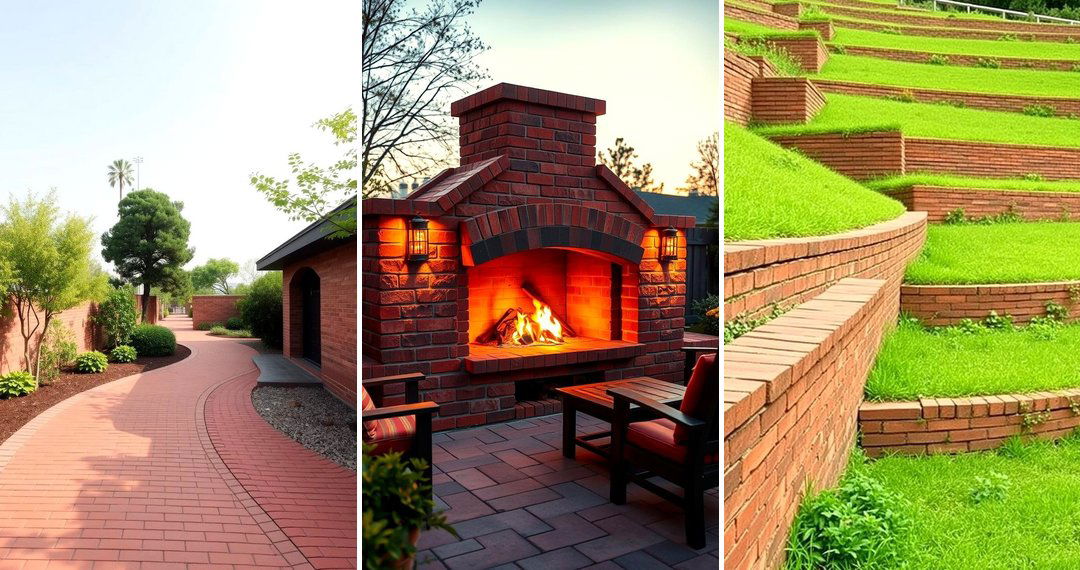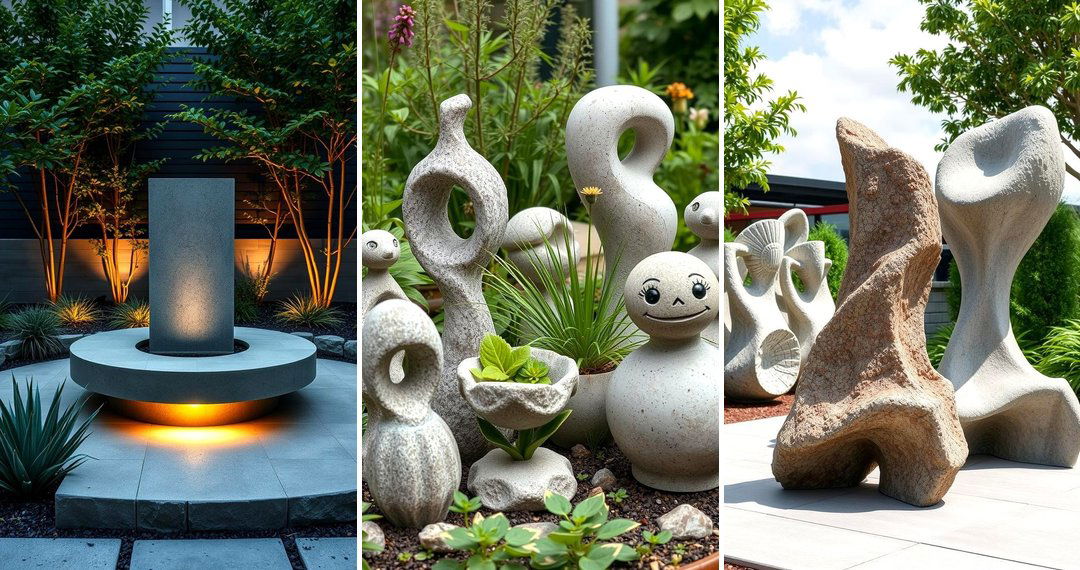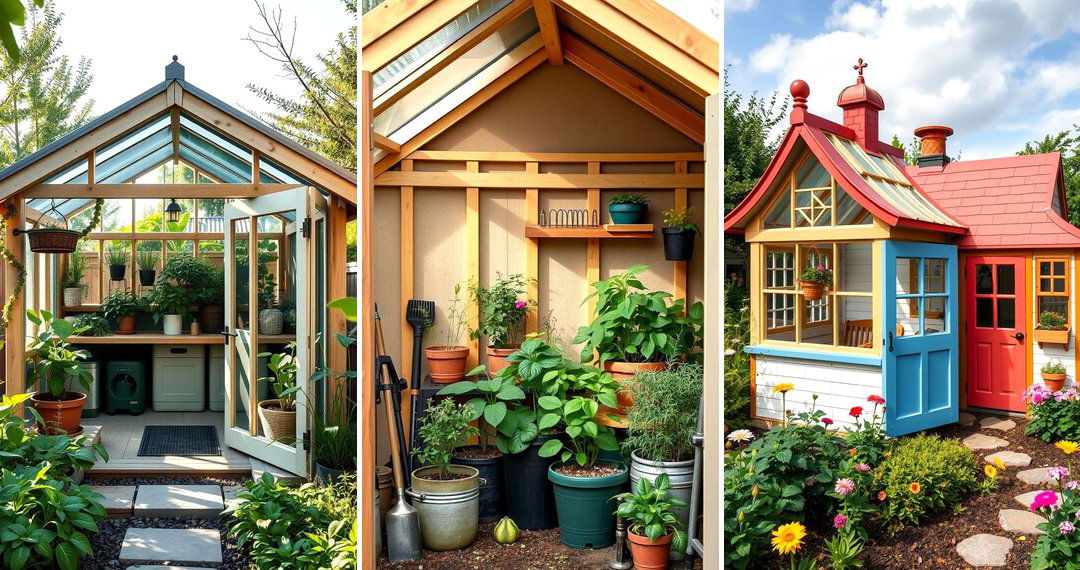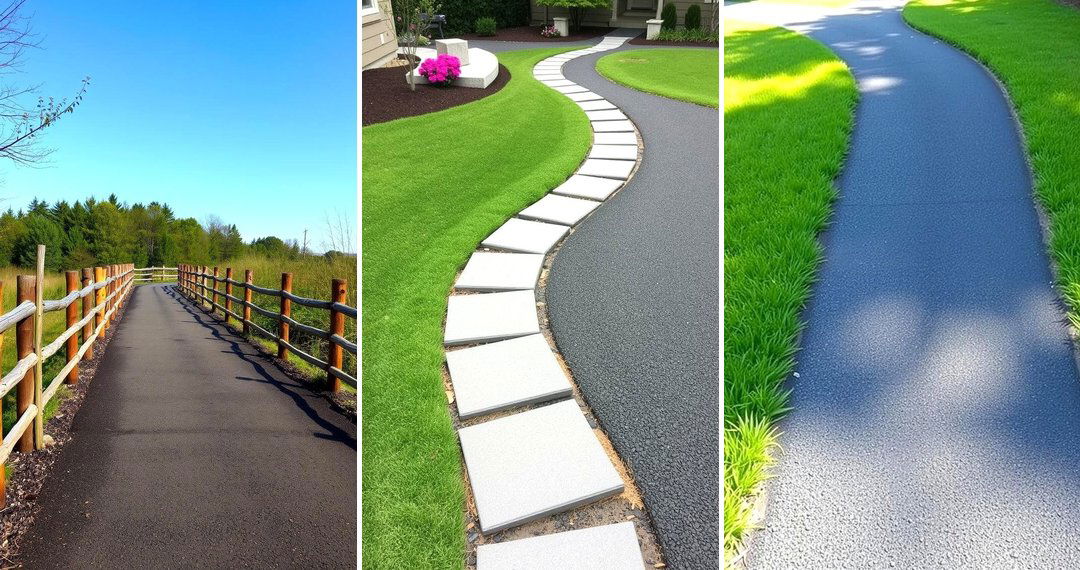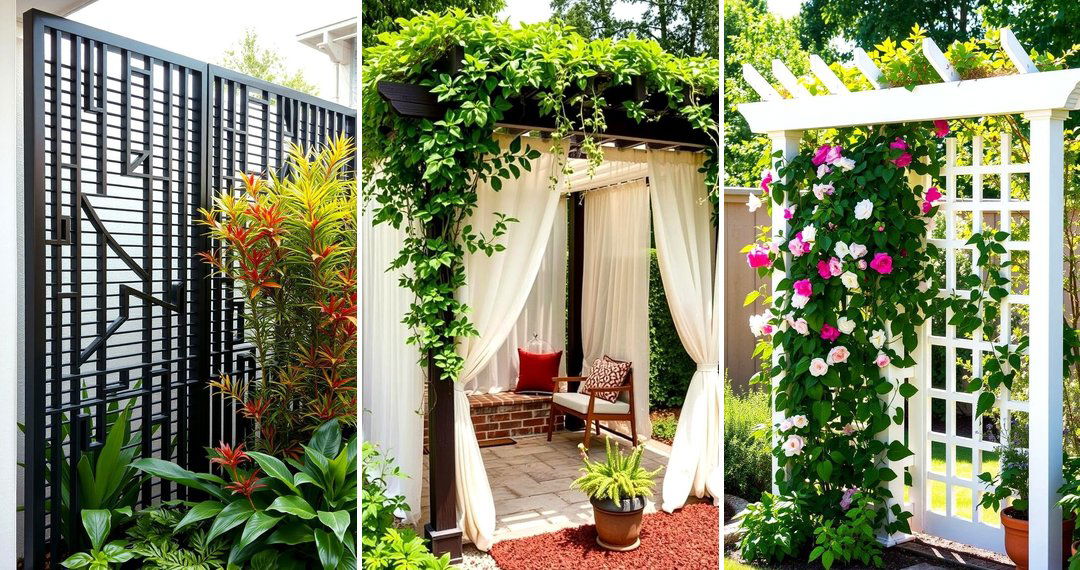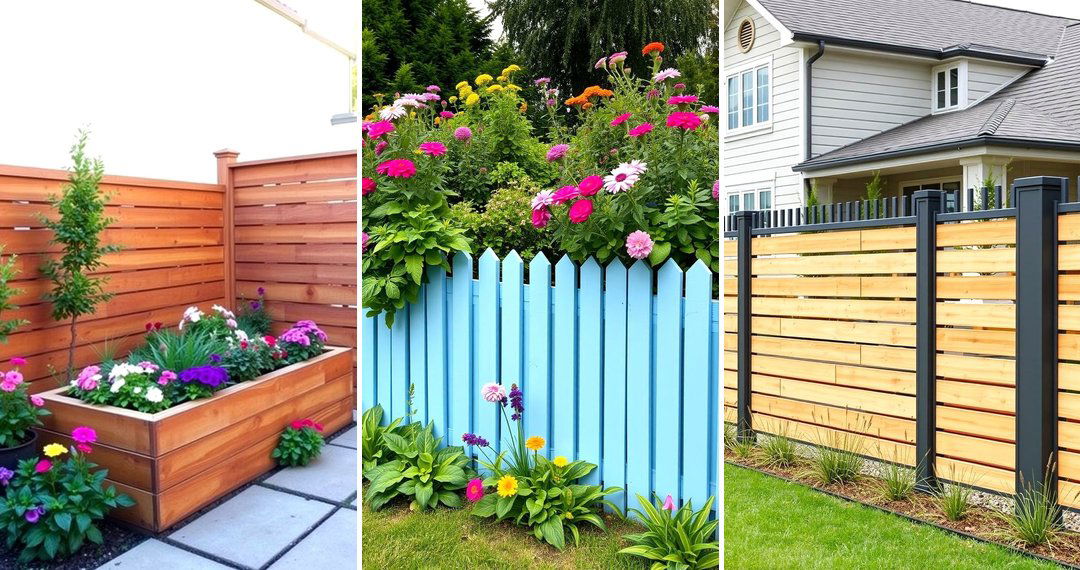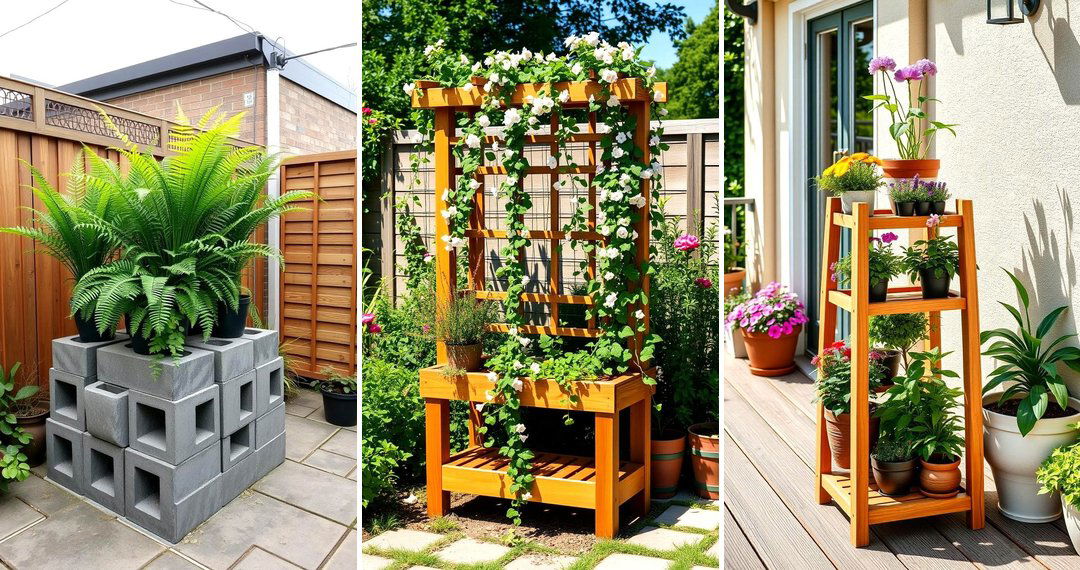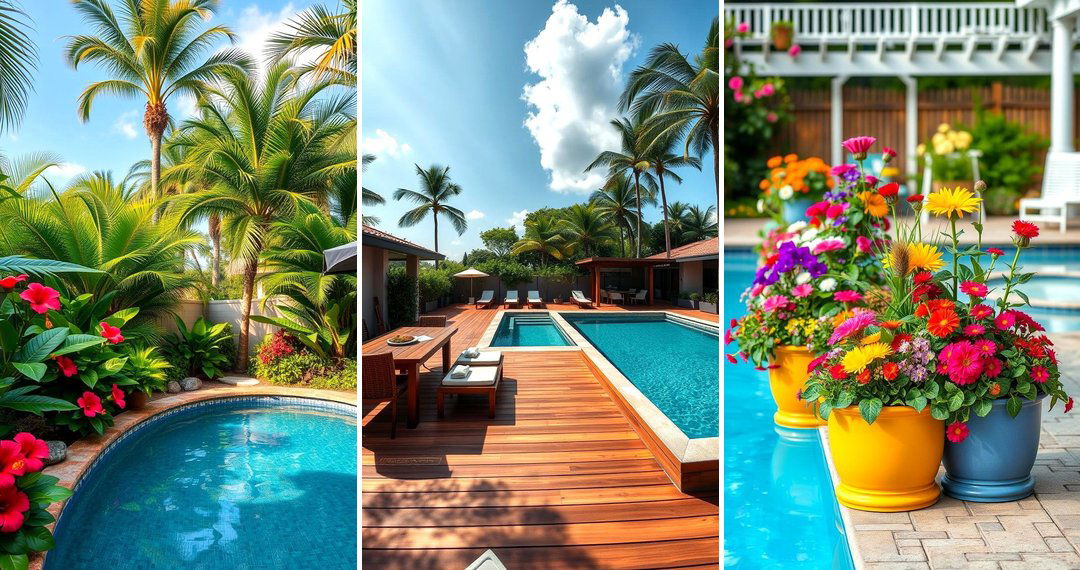Embark on a journey to transform your underutilized rooftop into a vibrant, productive oasis with the innovative concept of rooftop greenhouses. Imagine stepping outside your door and into a lush garden filled with fresh produce, fragrant herbs, and beautiful flowers, all thriving against the backdrop of the sky. This isn't just a dream; it's a tangible possibility with the right inspiration and a touch of creativity. Explore the exciting world of 24 Rooftop Greenhouse Ideas and discover how you can elevate your gardening experience to new heights.
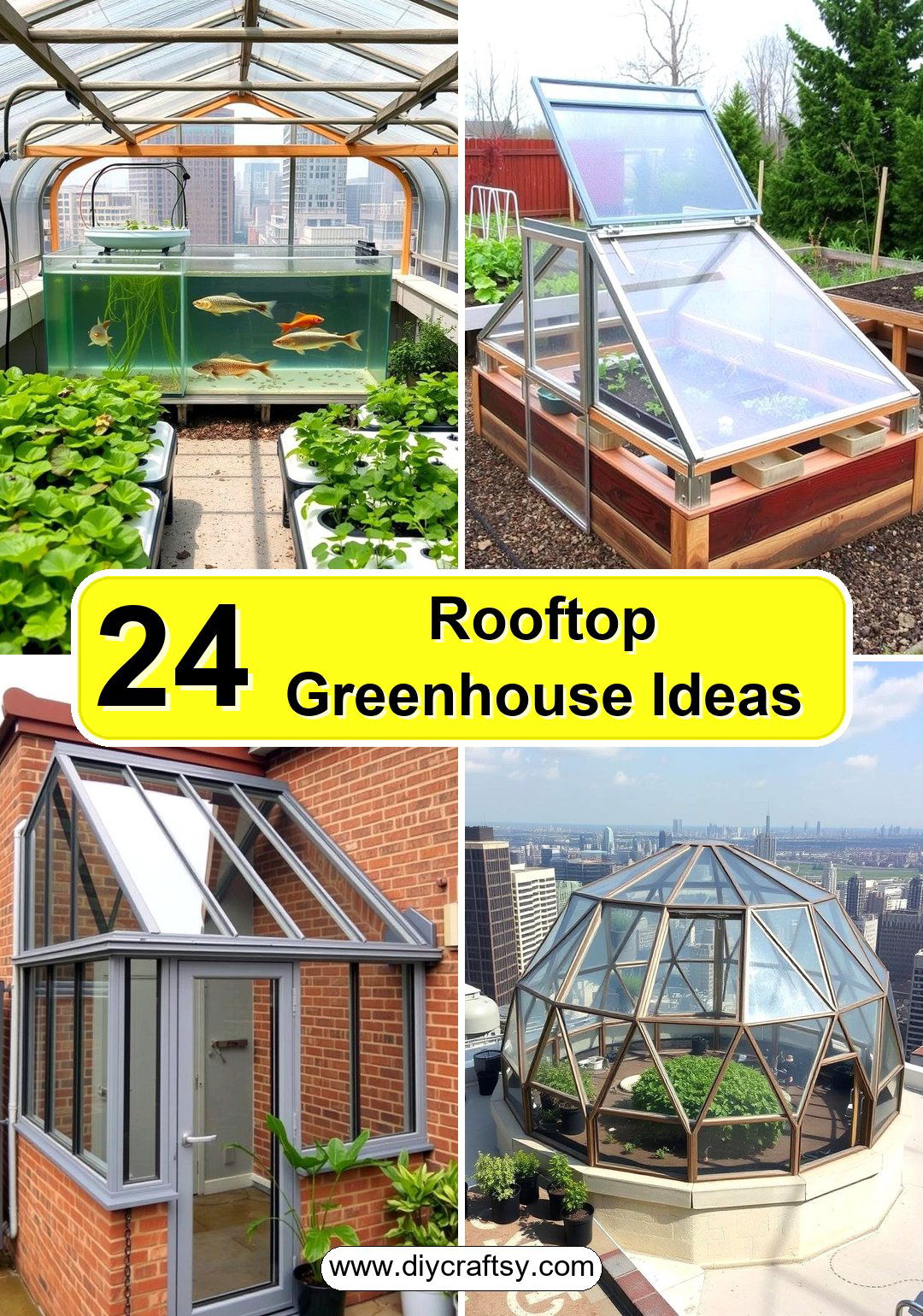
1. Lightweight Modular Greenhouse
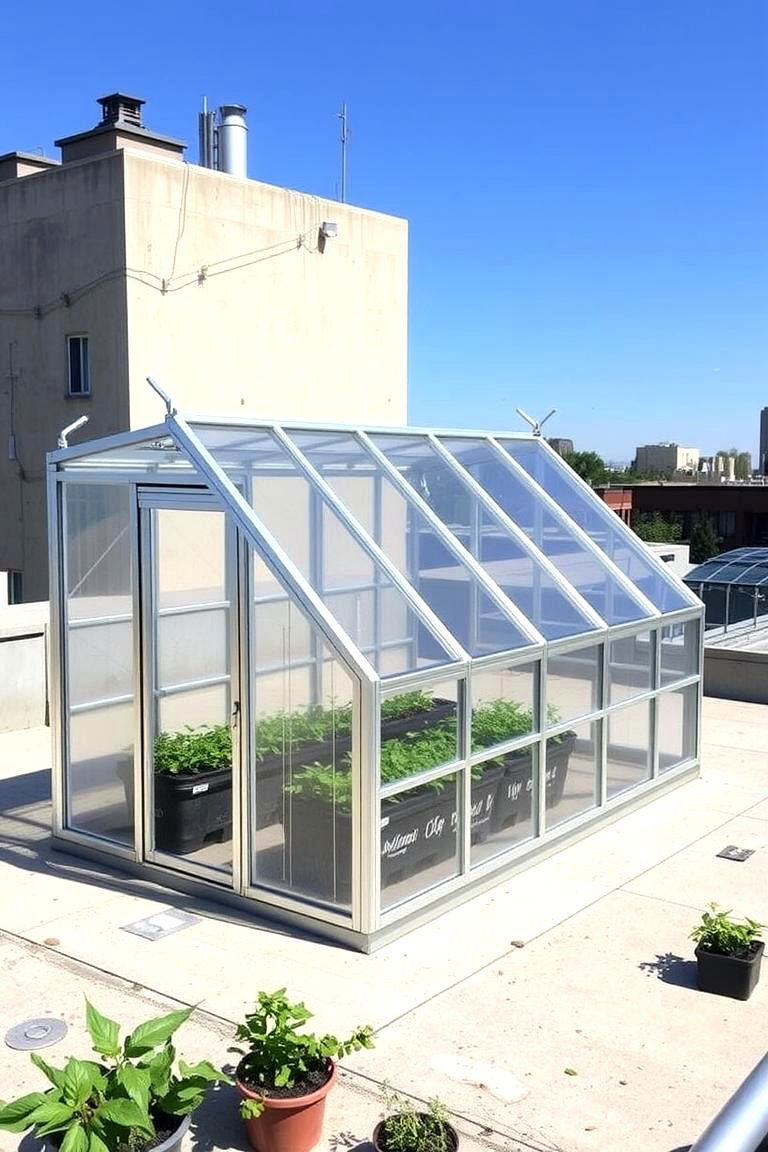
Consider a lightweight modular greenhouse system for easy installation and adaptability. These structures often utilize aluminum frames and polycarbonate panels, offering durability without excessive weight. The key benefits include simple assembly, potential for expansion or relocation, and good light transmission for plant growth. For urban dwellers or those with weight restrictions on their roofs, this option provides a practical and efficient way to enjoy rooftop gardening. Its adaptability makes it suitable for various roof sizes and shapes, truly maximizing the available space.
2. A-Frame Rooftop Greenhouse
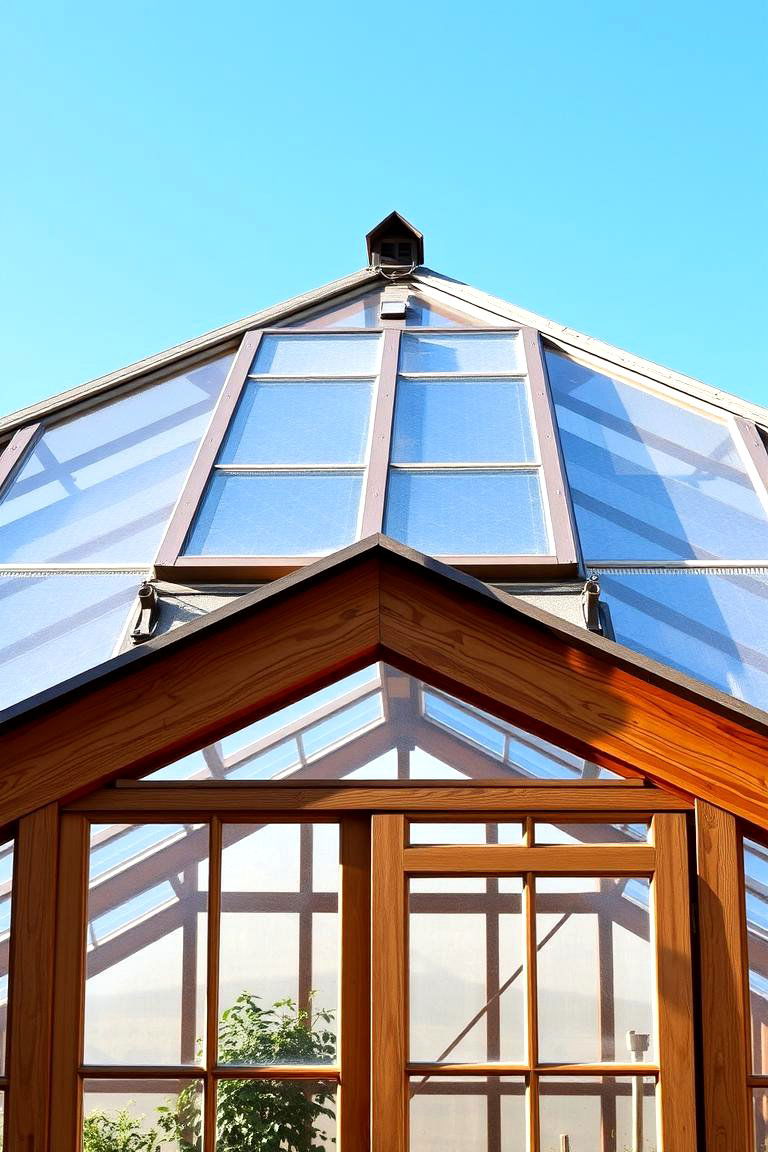
Another classic design is the A-frame greenhouse, which offers excellent light penetration and a traditional aesthetic. This structure typically features two sloping sides meeting at a peak, maximizing sunlight capture throughout the day. The benefits of an A-frame design include its sturdy construction, good ventilation potential with roof vents, and ample vertical space for taller plants. For gardeners looking for a visually appealing and highly functional greenhouse, the A-frame on a rooftop can be a perfect blend of form and function.
3. Lean-To Rooftop Greenhouse
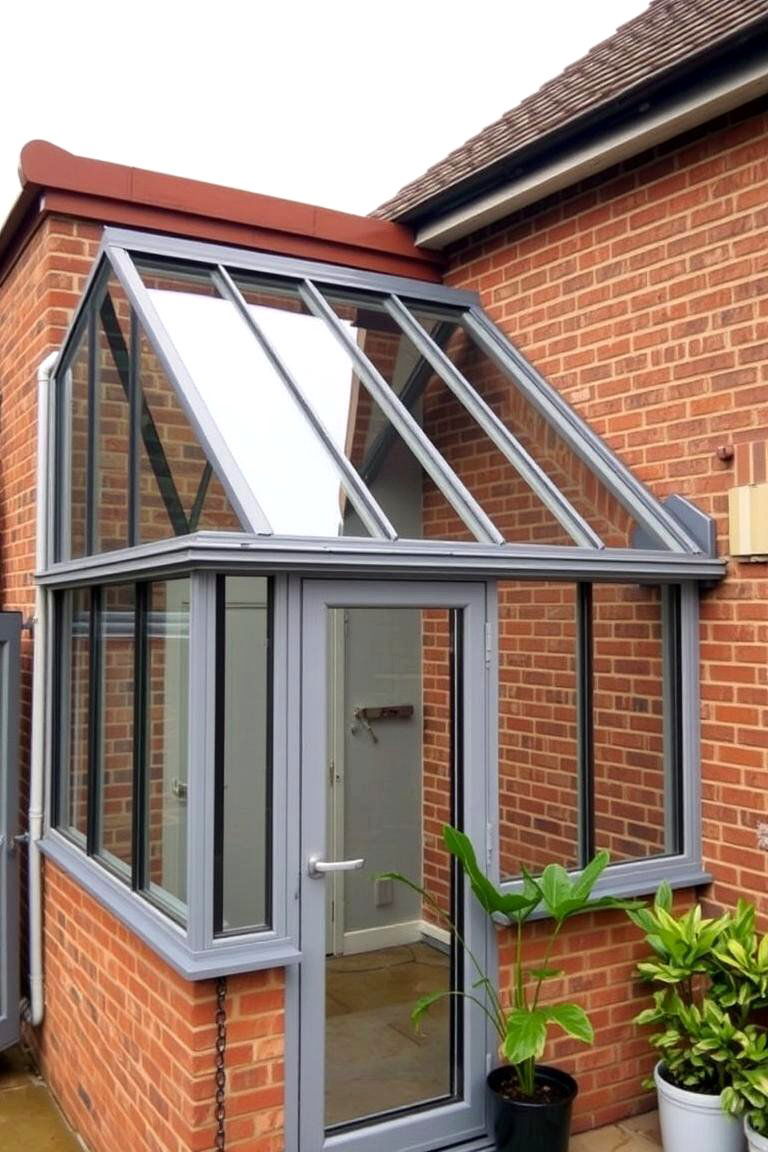
With a lean-to greenhouse, you can utilize an existing wall on your rooftop for support, making it a cost-effective and space-saving solution. This design typically has a single sloping roof that attaches to a building wall. The practical advantages include reduced material costs, added insulation from the existing wall, and easy access from an adjacent doorway or window. For those seeking a convenient and integrated greenhouse space, a lean-to design on a rooftop offers a seamless extension of your home.
4. Geodesic Dome Greenhouse
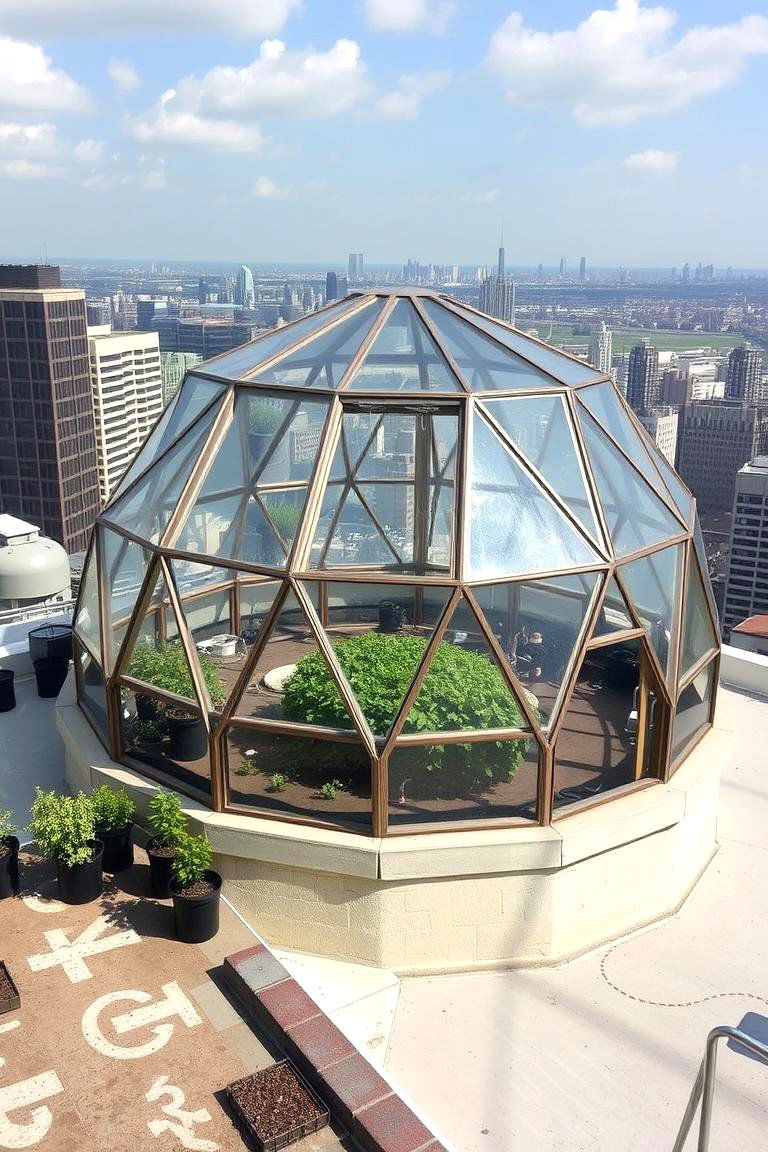
Take a look at the unique and energy-efficient geodesic dome greenhouse. Its spherical structure provides exceptional strength and uniform light distribution. The benefits of a dome design include its ability to withstand strong winds, efficient heating and cooling due to minimal surface area, and a visually striking appearance. For environmentally conscious gardeners looking for a robust and distinctive rooftop greenhouse, the geodesic dome stands out as an innovative choice.
5. Retractable Roof Greenhouse
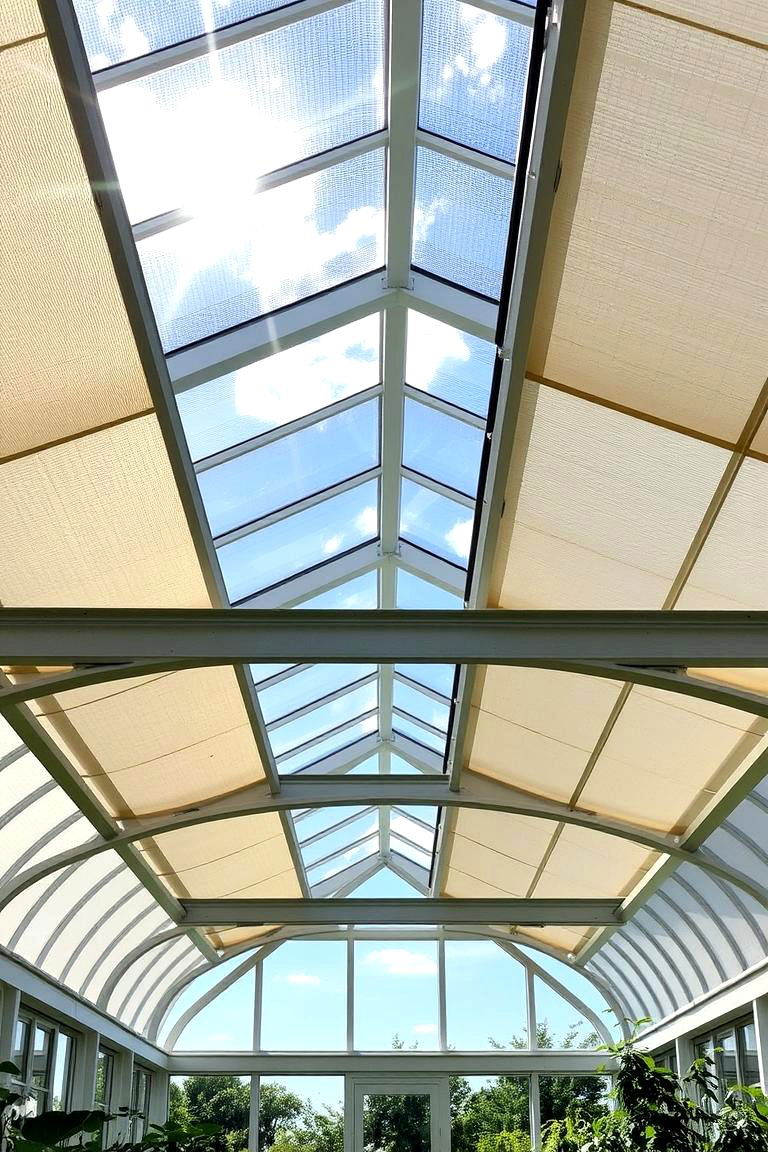
What about a retractable roof greenhouse for optimal climate control? This innovative design allows you to open or close the roof panels as needed, providing natural ventilation and temperature regulation. The key benefits include the ability to harden off plants, provide direct sunlight when desired, and protect plants from harsh weather by closing the roof. For gardeners who want maximum control over their greenhouse environment, a retractable roof system offers unparalleled flexibility.
6. Vertical Rooftop Greenhouse
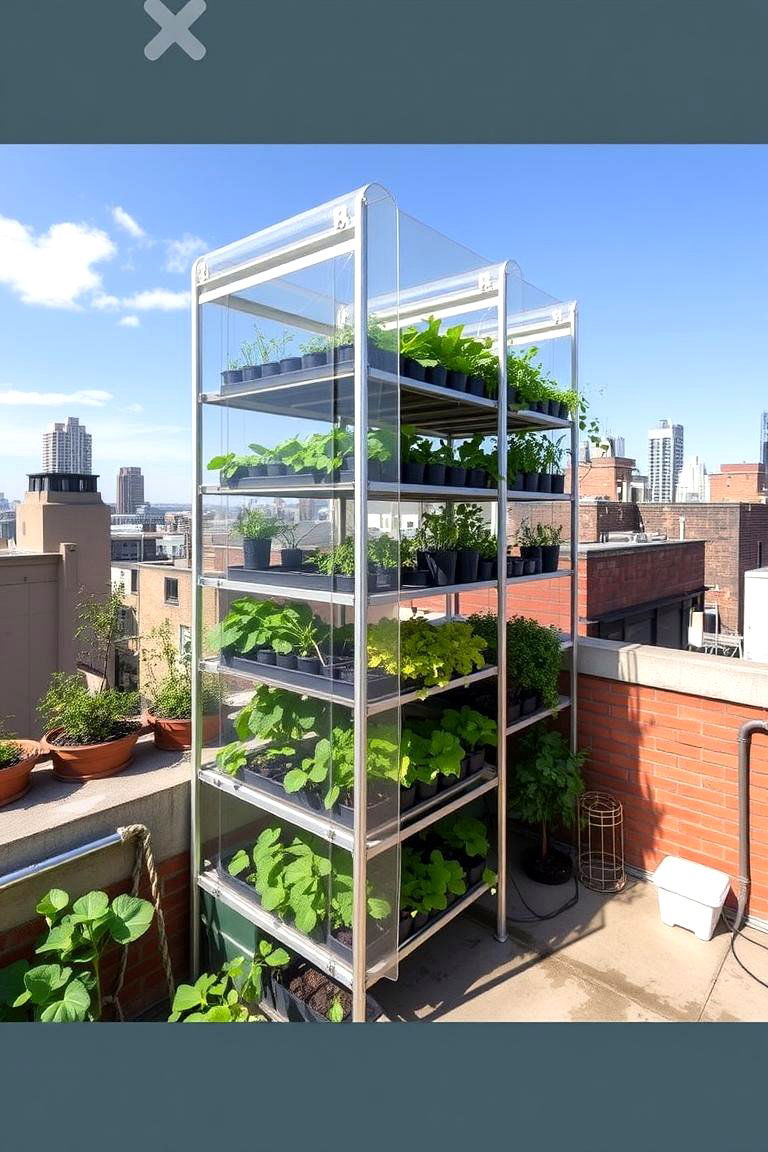
Looking to maximize space in a compact rooftop setting? A vertical greenhouse design utilizes tiered shelves and vertical growing systems to accommodate a large number of plants in a small footprint. The practical advantages include efficient use of limited space, improved air circulation, and easier harvesting at different levels. For urban gardeners with limited rooftop area, a vertical greenhouse offers an ingenious solution for abundant yields.
7. Container Garden Greenhouse
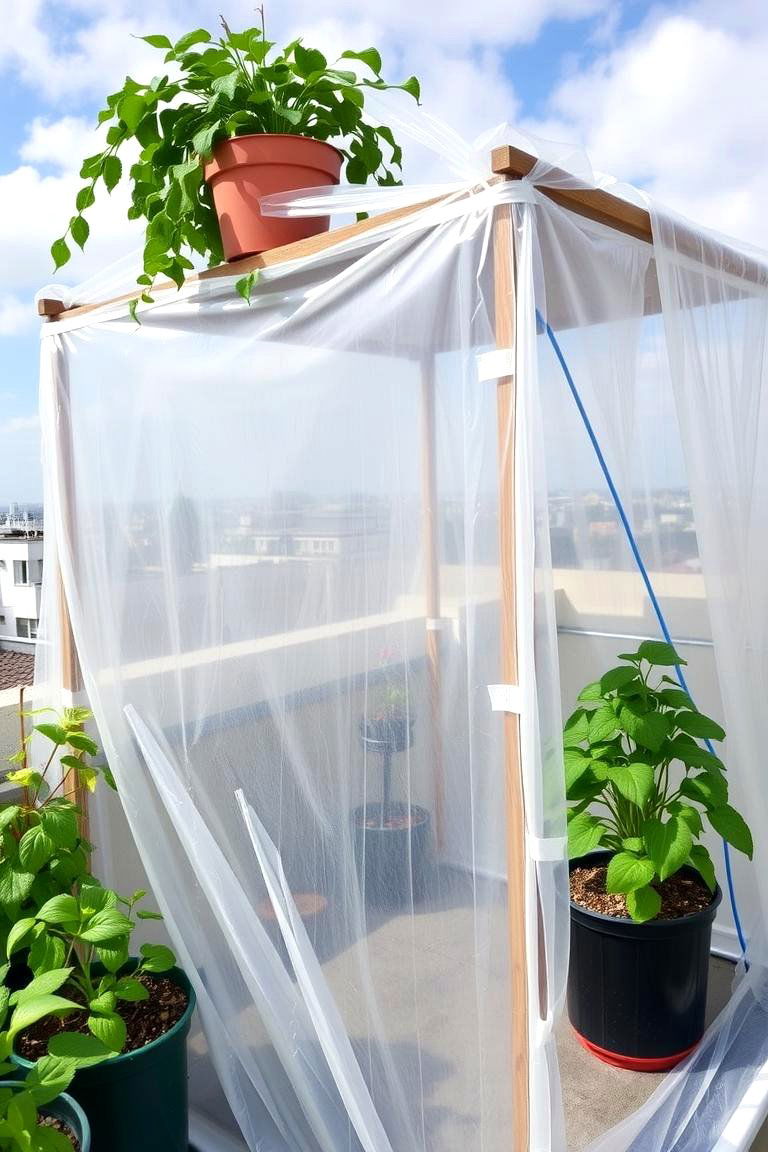
For a flexible and low-commitment option, consider a rooftop greenhouse made entirely of container gardens covered by a temporary or semi-permanent structure. This approach allows for easy rearrangement of plants and the ability to move them indoors during extreme weather. The benefits include portability, versatility in plant selection, and the potential for a phased approach to building a larger greenhouse. For beginners or renters, a container garden greenhouse provides a great starting point.
8. Pallet Wood Greenhouse
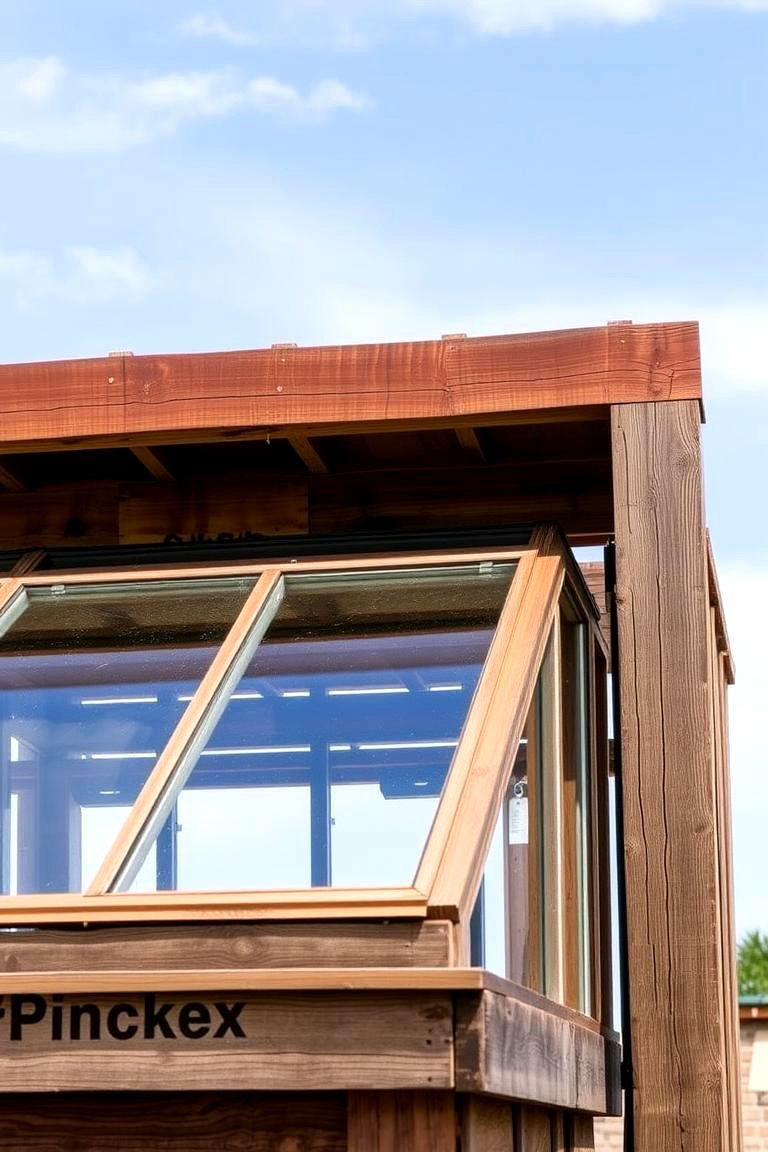
Bringing a touch of rustic charm to your rooftop, a greenhouse constructed from reclaimed pallet wood can be an eco-friendly and budget-conscious choice. With some DIY skills, you can transform discarded pallets into a functional and aesthetically pleasing structure. The advantages include cost savings, sustainable material use, and a unique, handcrafted look. For resourceful gardeners who enjoy upcycling, a pallet wood greenhouse offers a rewarding project.
9. Glass Jar Cloche Greenhouse

Consider a charming and miniature approach with individual glass jar cloches placed over plants in rooftop beds or containers. While not a full-sized greenhouse, these cloches provide localized protection from pests and weather, creating a mini-greenhouse effect. The benefits include ease of use, affordability, and an attractive way to nurture delicate seedlings or individual plants. For small-scale rooftop gardening, glass jar cloches offer a simple yet effective solution.
10. Polycarbonate Panel Greenhouse
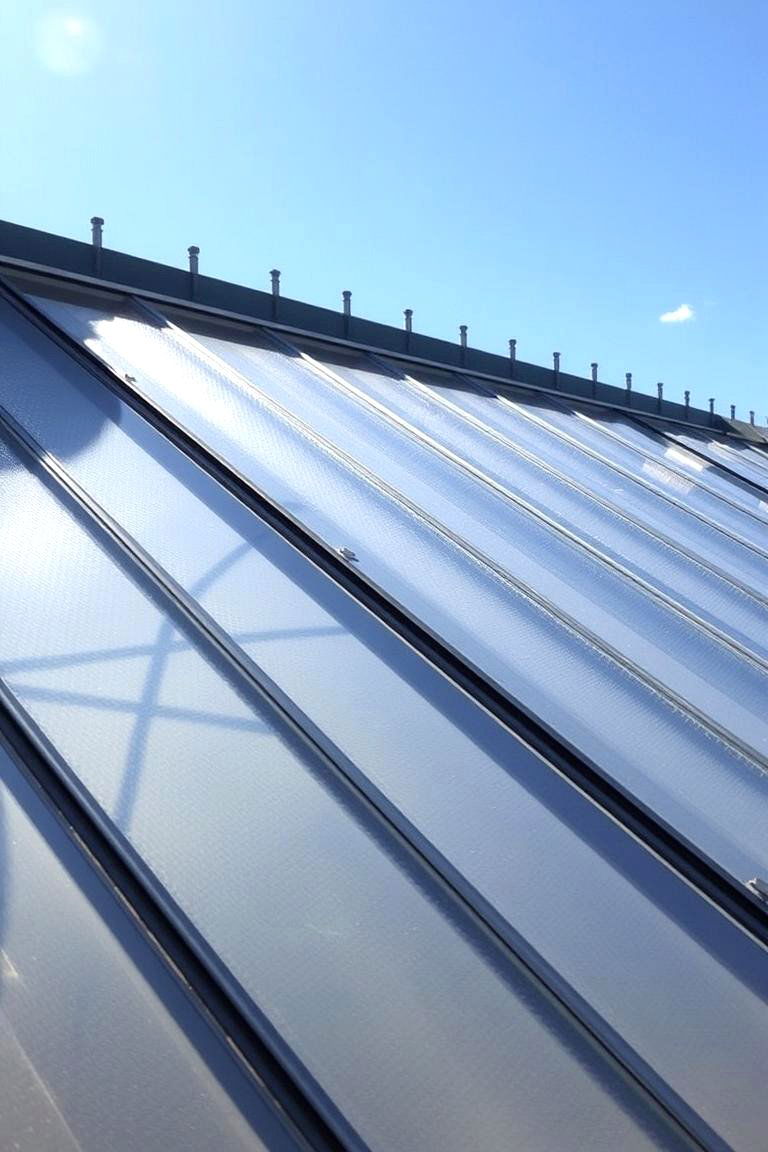
The use of polycarbonate panels offers a durable and lightweight glazing option for any rooftop greenhouse design. These panels are impact-resistant, provide good insulation, and diffuse light effectively, preventing scorching of plants. The practical advantages include longevity, ease of handling, and excellent growing conditions. For gardeners seeking a robust and efficient glazing material, polycarbonate panels are a reliable choice.
11. PVC Pipe Greenhouse Frame
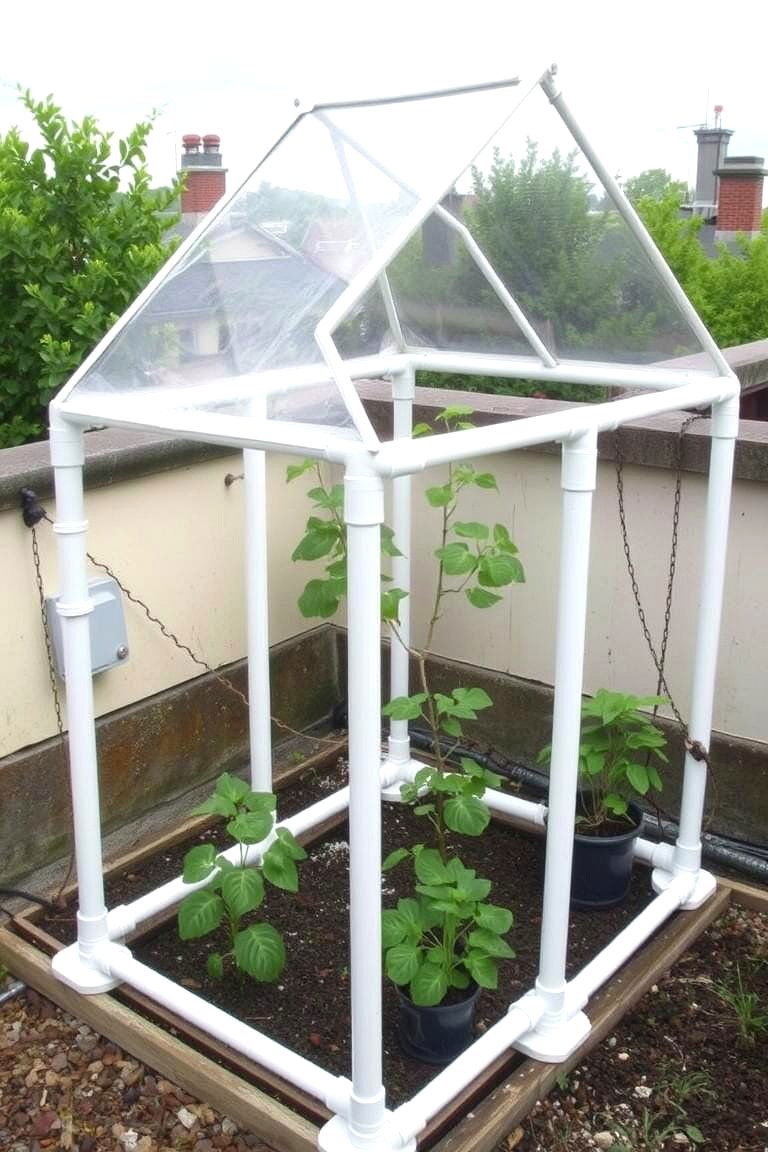
Another budget-friendly option for framing a rooftop greenhouse is using PVC pipes. These are lightweight, easy to cut and assemble, and resistant to rust and corrosion. The benefits include low cost, simple construction, and the ability to create various shapes and sizes. For DIY enthusiasts looking for an affordable framing material, PVC pipes offer a versatile solution for smaller rooftop greenhouses.
12. Shade Cloth Covered Greenhouse
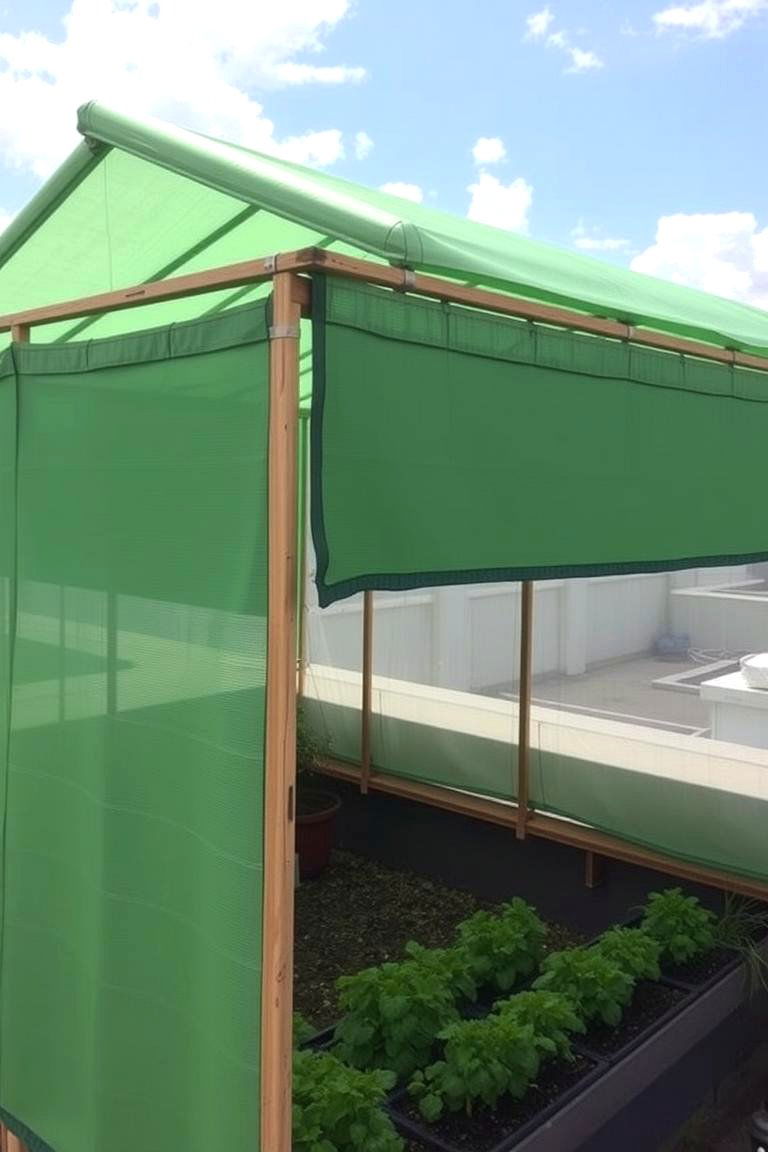
In regions with intense sunlight, a simple frame covered with shade cloth can act as a rooftop greenhouse by providing protection from excessive heat and UV radiation. This is particularly beneficial for growing shade-loving plants or protecting young seedlings. The advantages include affordability, easy installation, and effective temperature regulation in hot climates. For gardeners dealing with harsh sun, a shade cloth greenhouse offers essential protection.
13. Cold Frame Rooftop Greenhouse

For extending the growing season in cooler climates, a cold frame greenhouse on your rooftop can be invaluable. This low-lying structure, often with a transparent lid, traps solar heat to protect plants from frost and cold winds. The benefits include the ability to start seeds earlier, overwinter tender plants, and harvest later in the season. For gardeners in colder regions, a rooftop cold frame is a practical tool for year-round gardening.
14. Integrated Planter Box Greenhouse
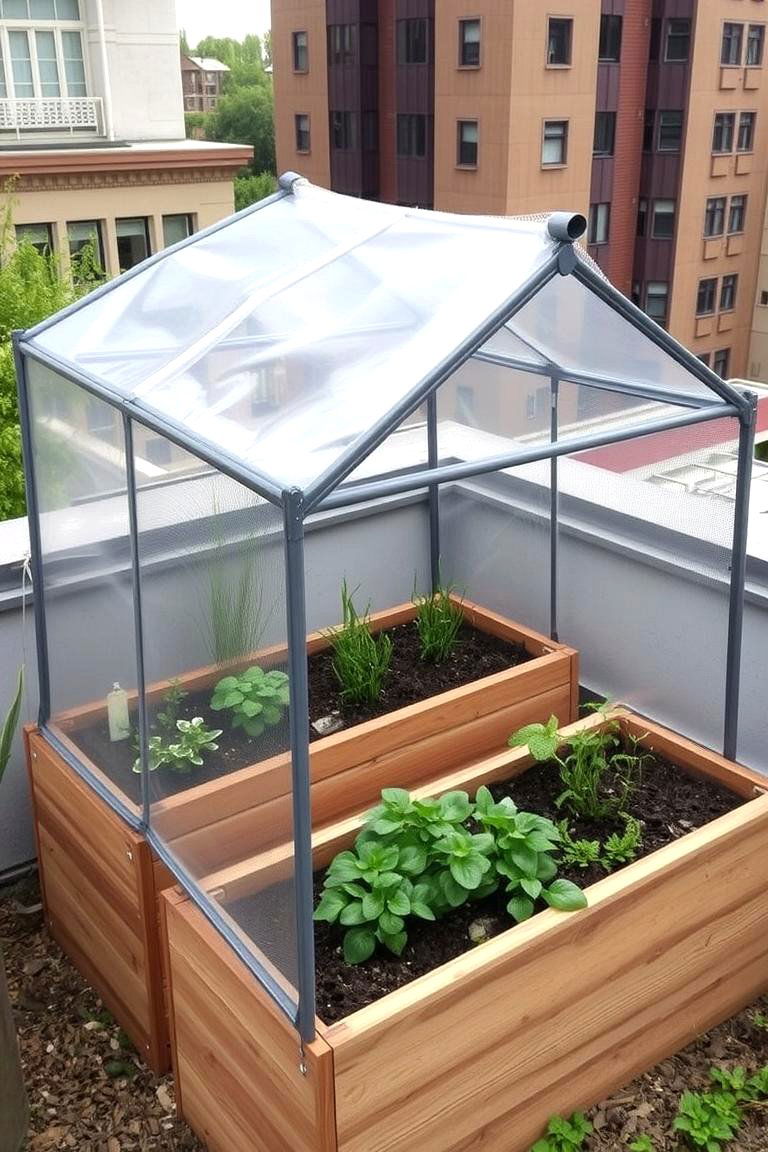
What about incorporating a greenhouse directly into raised planter boxes on your rooftop? This design often involves a transparent cover that fits over the planter, creating a mini-environment for the plants within. The practical advantages include ease of access for tending to plants, efficient use of space, and a visually appealing integration of greenhouse and garden bed. For those with existing rooftop planter boxes, this offers a convenient upgrade.
15. Solar-Powered Greenhouse
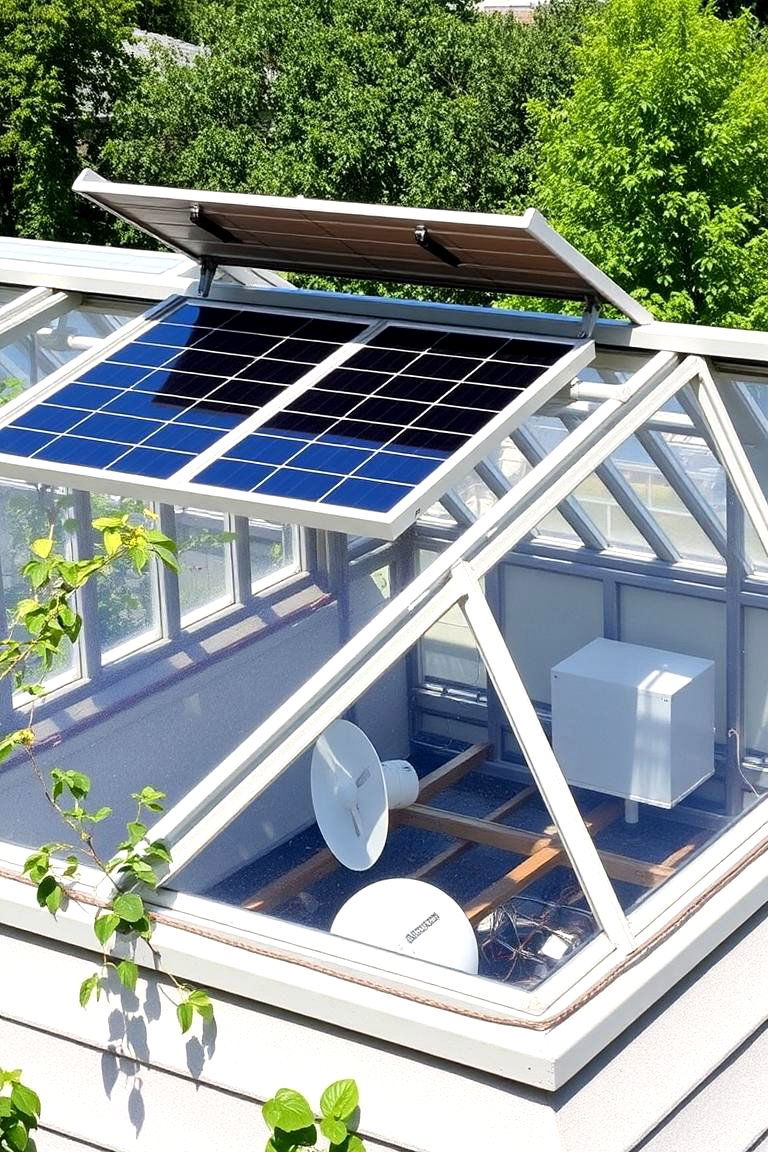
Consider integrating solar panels into your rooftop greenhouse design to power ventilation fans, lights, or even a small heating system. This eco-friendly approach reduces your reliance on traditional energy sources and can make your greenhouse more sustainable. The benefits include lower operating costs, reduced environmental impact, and the potential for off-grid operation. For environmentally conscious gardeners, a solar-powered greenhouse is an attractive option.
16. Hydroponic Rooftop Greenhouse

For maximizing yields and water efficiency, explore a hydroponic system within your rooftop greenhouse. Hydroponics involves growing plants without soil, using nutrient-rich water solutions. The advantages include faster growth rates, higher yields, reduced water usage, and less susceptibility to soil-borne diseases. For gardeners seeking advanced growing techniques, a hydroponic rooftop greenhouse offers exciting possibilities.
17. Aquaponic Rooftop Greenhouse
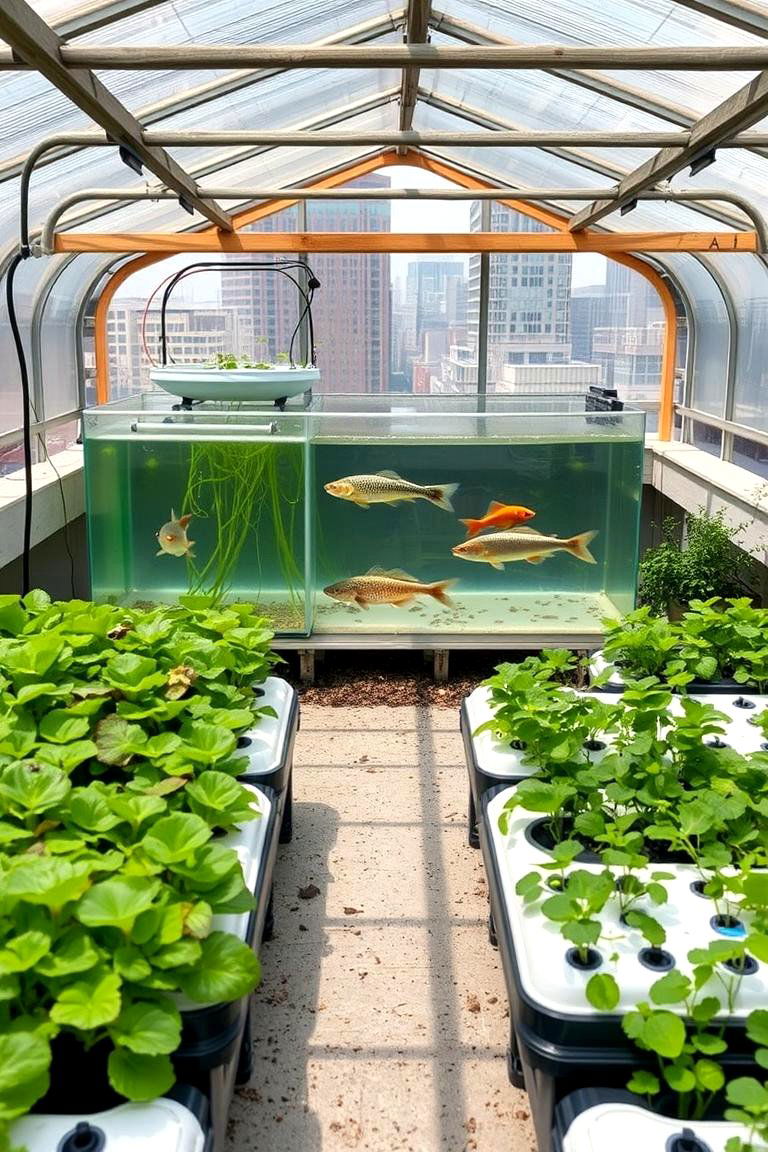
Bringing together aquaculture and hydroponics, an aquaponic rooftop greenhouse creates a symbiotic ecosystem. Fish are raised in a tank, and their waste provides nutrients for the plants grown hydroponically, while the plants filter the water for the fish. The benefits include a sustainable food production system, reduced water waste, and the ability to grow both fish and vegetables. For those interested in a closed-loop system, aquaponics on a rooftop is a fascinating choice.
18. Automated Climate Control Greenhouse
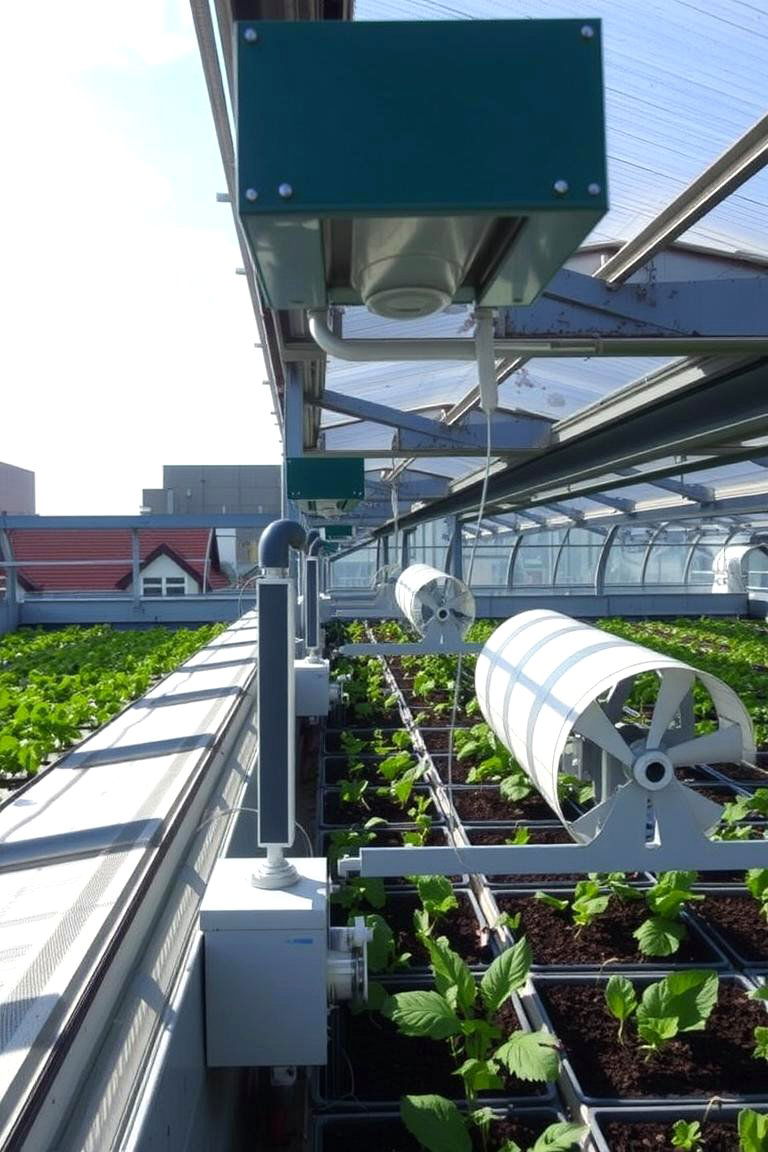
For hands-off operation, consider a rooftop greenhouse equipped with automated climate control systems. These systems can automatically regulate temperature, humidity, ventilation, and even watering based on pre-set parameters or sensor readings. The practical advantages include optimal growing conditions without constant manual intervention, energy efficiency, and peace of mind. For busy gardeners, automation can be a valuable asset.
19. Multi-Tiered Growing System Greenhouse
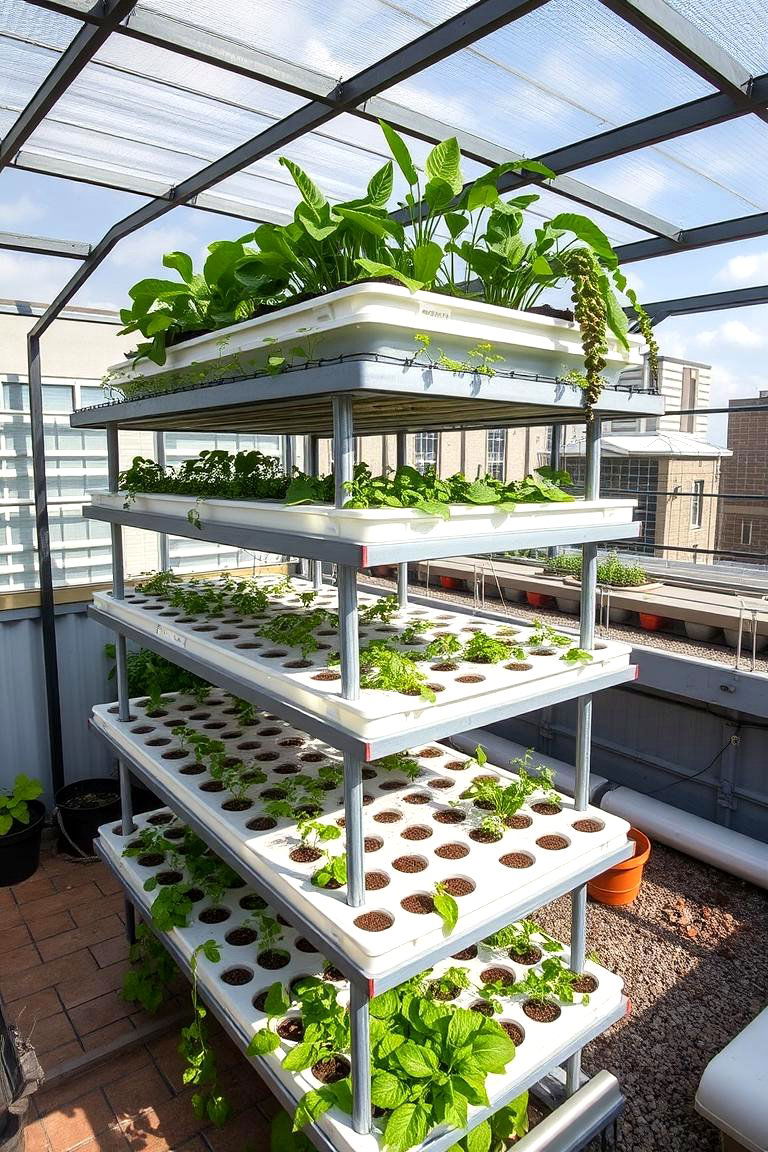
Looking to maximize production in a limited space? A greenhouse with a multi-tiered growing system utilizes shelves and platforms to grow plants at different vertical levels. The benefits include increased growing capacity within the same footprint, improved air circulation, and easier access to plants at various heights. For gardeners with ambitious yield goals and limited rooftop space, multi-tiered systems are highly effective.
20. Greenhouse with Integrated Rainwater Harvesting
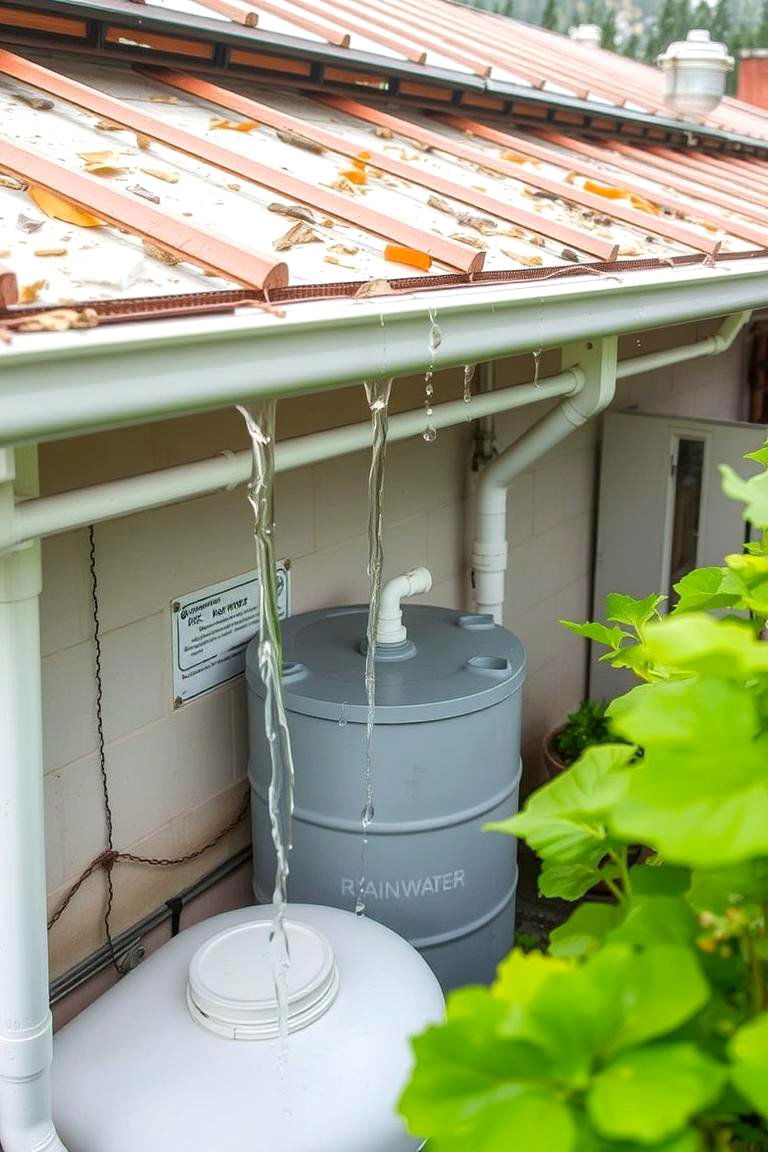
Consider incorporating a rainwater harvesting system into your rooftop greenhouse design. This involves collecting rainwater from the greenhouse roof and storing it for irrigation. The advantages include reduced reliance on municipal water supplies, cost savings on water bills, and access to naturally soft rainwater that is beneficial for plants. For environmentally conscious gardeners, rainwater harvesting is a smart and sustainable practice.
21. Insect-Proof Rooftop Greenhouse
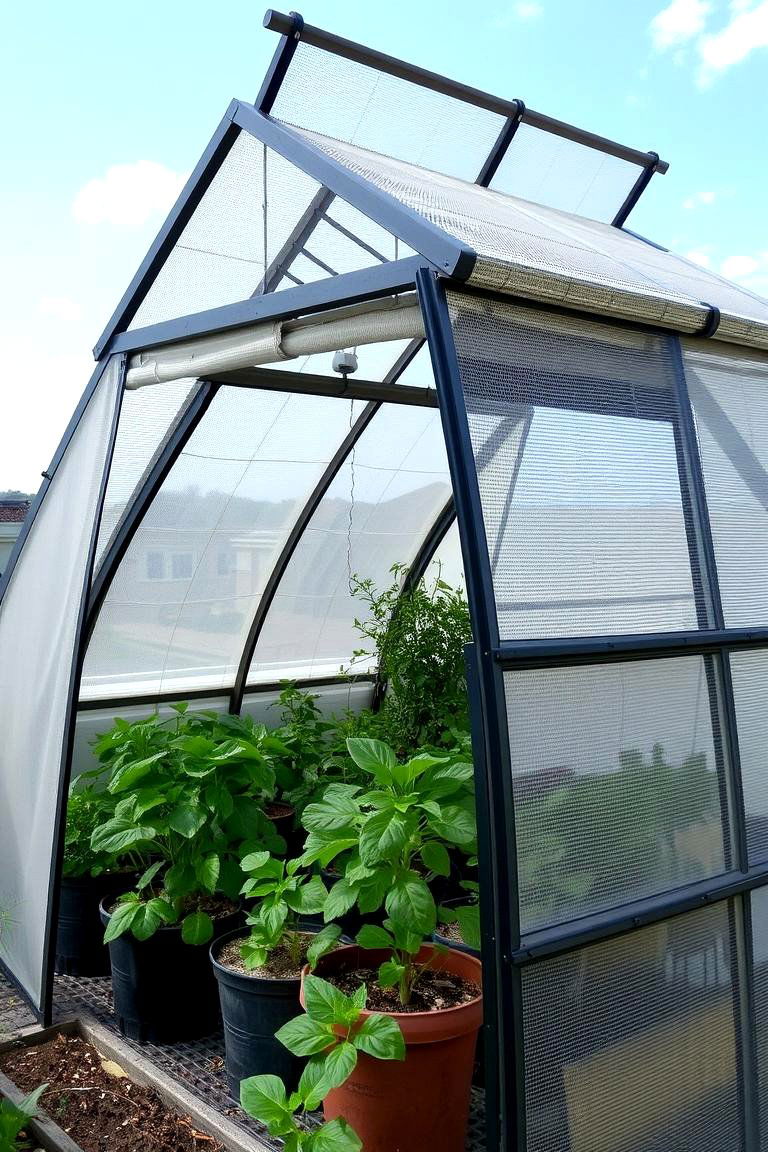
To protect your plants from pests without the use of chemicals, consider building an insect-proof rooftop greenhouse. This involves using fine mesh screens on all openings, including vents and doors, to prevent insects from entering. The benefits include healthier plants, reduced need for pesticides, and a more natural growing environment. For organic gardeners, an insect-proof greenhouse is a valuable asset.
22. Greenhouse with Built-in Composting System

What about integrating a composting system into your rooftop greenhouse? This allows you to recycle kitchen scraps and garden waste into nutrient-rich compost for your plants, right on your rooftop. The advantages include reduced waste, creation of valuable soil amendment, and a closed-loop system for your gardening activities. For sustainable gardeners, a built-in composting system adds another layer of eco-friendliness.
23. Rooftop Greenhouse with Relaxation Space

Beyond just growing plants, consider designing your rooftop greenhouse to include a small relaxation area. This could be a bench, a comfortable chair, or even a small table where you can enjoy the tranquility of your green space. The benefits include a peaceful retreat, a connection with nature, and a multi-functional space for both gardening and relaxation. For those seeking a rooftop sanctuary, combining a greenhouse with a relaxation zone is ideal.
24. DIY Greenhouse from Repurposed Materials
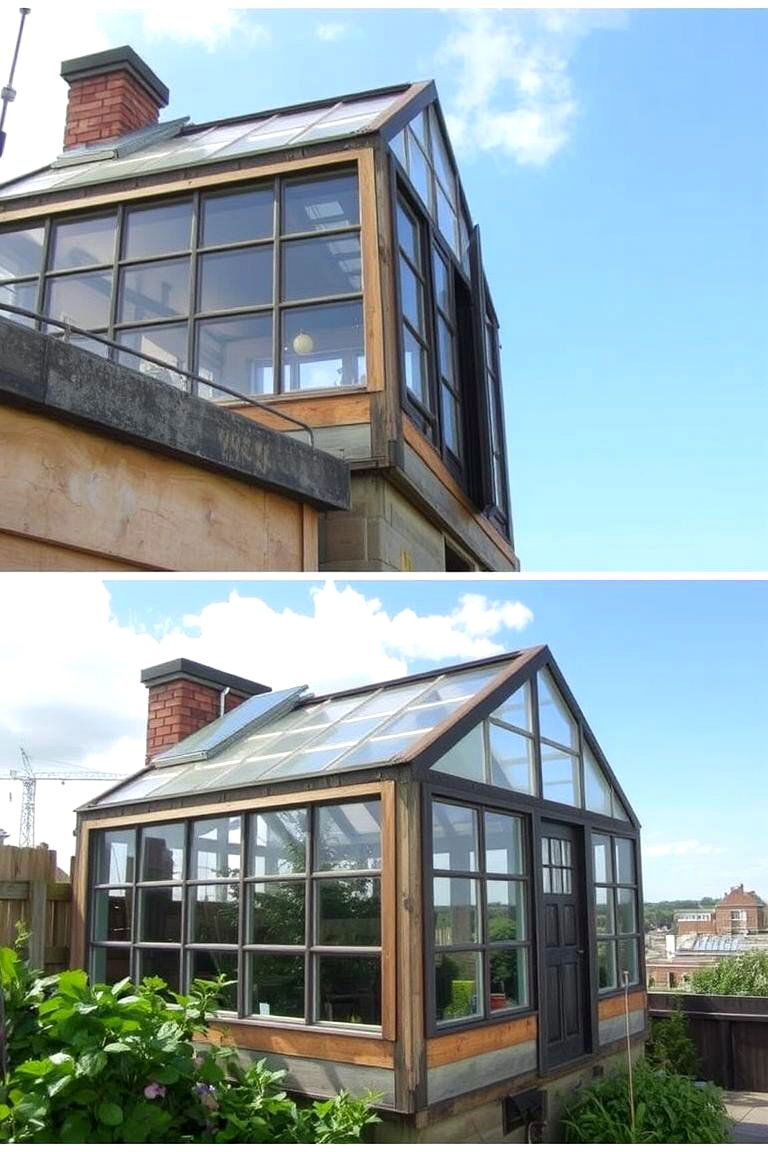
Finally, embrace your creativity and build a rooftop greenhouse entirely from repurposed materials. This could involve using old windows for glazing, salvaged wood for the frame, or even recycled plastic bottles. The benefits include significant cost savings, reduced waste, and a unique, personalized structure with a story. For resourceful and environmentally minded gardeners, a DIY greenhouse from repurposed materials is a rewarding endeavor.
Conclusion:
The realm of 24 Rooftop Greenhouse Ideas unveils a spectrum of possibilities for transforming urban and residential spaces into flourishing gardens. From lightweight modular designs perfect for adaptability to robust geodesic domes offering energy efficiency, each concept presents unique advantages for gardeners of all levels. The integration of features like retractable roofs for climate control, vertical systems for space optimization, and even solar power for sustainability highlights the innovative potential of rooftop cultivation. Embracing these ideas not only expands your gardening horizons but also contributes to a greener, more self-sufficient lifestyle. So, consider the potential and envision your own thriving oasis as you delve deeper into the world of 24 Rooftop Greenhouse Ideas.


